ROUND Function in Excel is an essential tool for ensuring numerical accuracy and precision in your spreadsheets. By using the ROUND Function, you can eliminate unwanted decimal places, making your data cleaner and more presentable. Say goodbye to inconsistencies and hello to streamlined data presentation with this versatile function. Whether you’re working on financial models, statistical analysis, or daily business operations, the ROUND Function in Excel enhances your ability to manage and interpret data accurately. Take control of your numerical data, improve your calculations, and present polished results by leveraging the power of the ROUND Function in Excel. Embrace this feature to elevate the quality and reliability of your data management tasks.
This Content Covers:
- What is ROUND Function in Excel?
- How to use ROUND Function in Excel?
- Use of ROUND function
- Use of ROUNDUP Function
- Use of ROUNDDOWN Function
- Round from Number Group
- Round by using Format Cells Dialogue Box
- How to Round Decimals in Excel to a Certain Number of Places?
- How to Extract a Decimal Part of a Number?
1. What is ROUND Function in Excel?
The ROUND function in Microsoft Excel is a pre-built Math/Trig function that is used to return a value with a given number of rounded digits. The ROUND function can be used to round to the right or left of the decimal point in Excel. This function can be used as a worksheet function in Excel worksheets.
2. How to use ROUND Function in Excel?
2.1 Use of ROUND function
Excel’s ROUND function rounds an integer to a specified number of digits. The ROUND function can round up or down.
Step 1: Insert the formula shown in the picture in cell B2 to round this number to two decimal places.
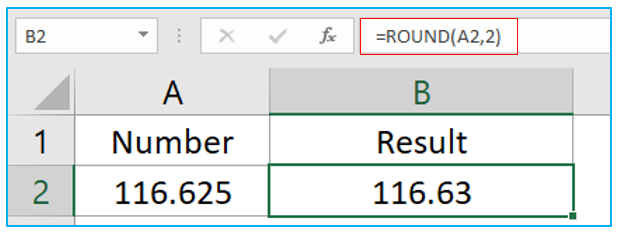
Step 2: This formula rounded the number to one decimal place.
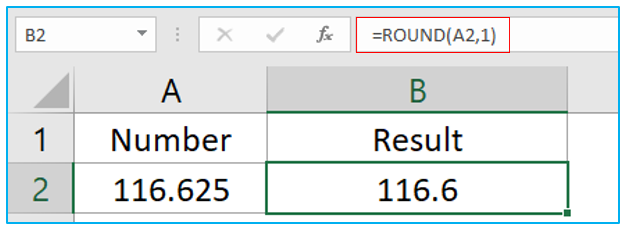
Step 3: Use this to round the number to the nearest integer.
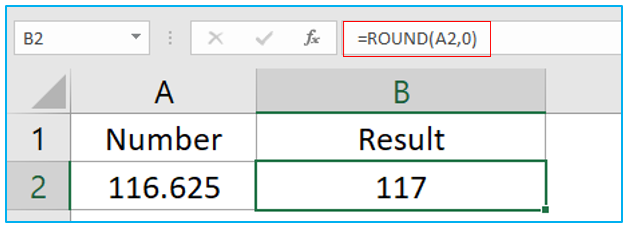
Step 4: This formula rounds the number to the nearest 10.
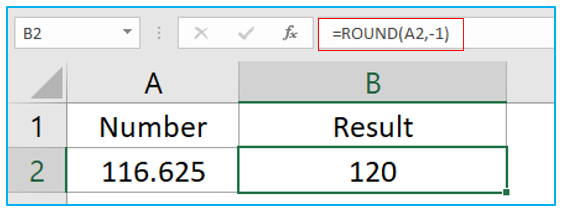
Step 5: This one rounds the number to the nearest 100.
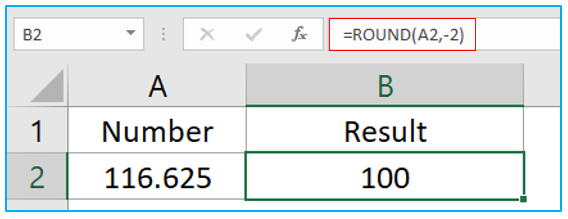
2.2 Use of ROUNDUP Function
A number is always rounded up and away from zero by the ROUNDUP function In Excel.
Step 1: Rounded the number from this below given picture up to one decimal place.
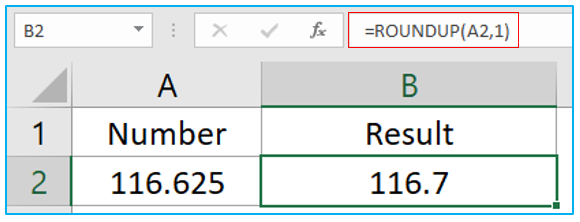
Step 2: Using 0 with ROUNDUP formula will round the number up to the nearest integer.
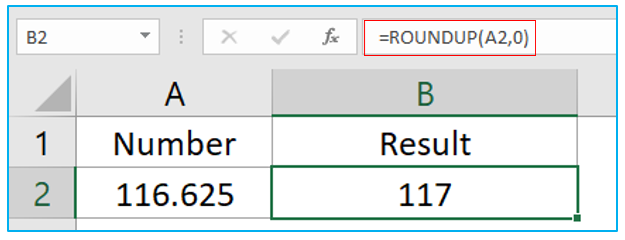
Step 3: Rounds the number up to the nearest 10.
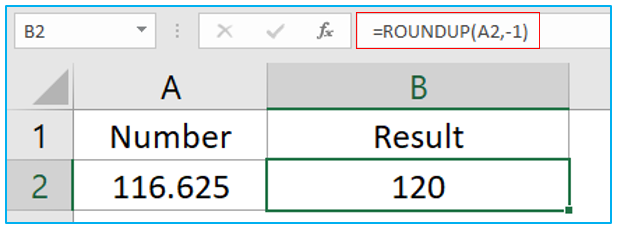
Step 4: This formula rounds the number up to the nearest 100.
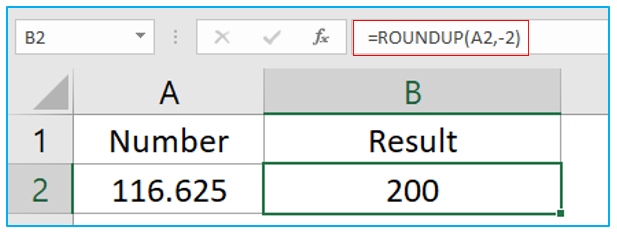
Step 5: Rounds this negative number up to the nearest integer.
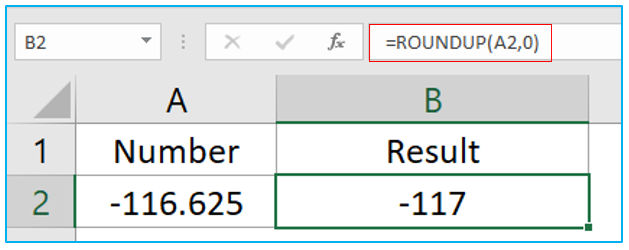
2.3 Use of ROUNDDOWN Function
When using Excel’s ROUNDDOWN function, a number is always rounded down towards zero.
Step 1: This formula rounded the number down to one decimal place.
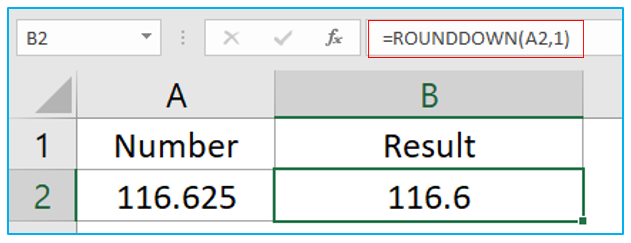
Step 2: Rounds this number down to the nearest integer.
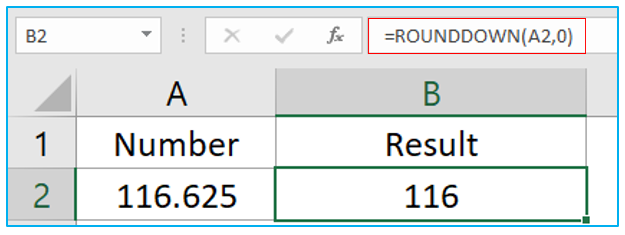
Step 3: Round the number down to the nearest 10.
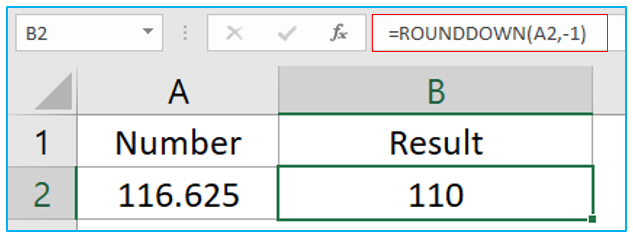
Step 4: This one rounds the number down to the nearest 100.
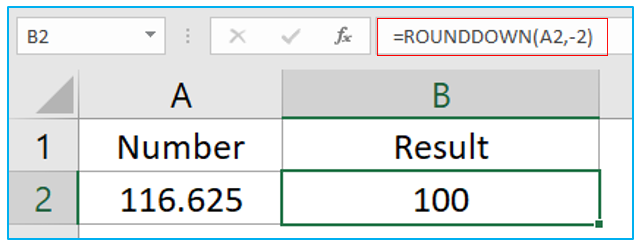
Step 5: Rounds the number down to the nearest 1000.
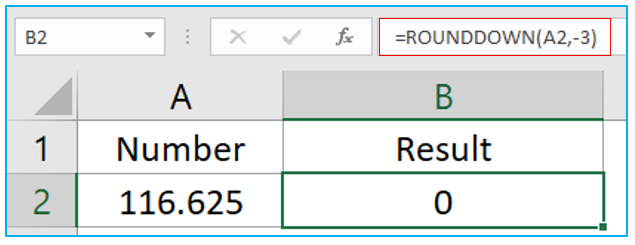
3. Round from Number Group
Simply increasing or decreasing the number of visible decimal places will round figures without changing the actual value.
Step 1: Select the number or numbers and click on Increase Decimal or Decrease Decimal command on the Home tab in the Number group.
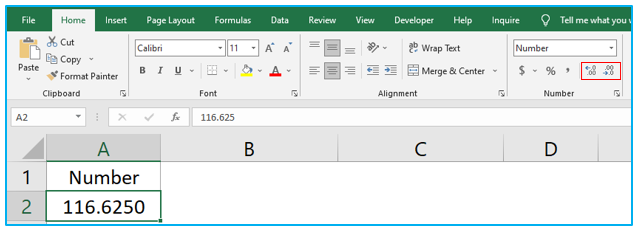
4. Round by using Format Cells Dialogue Box
Step 1: Select the number or numbers and press CTRL+1 key. This is the shortcut for activating the Format Cells dialogue box. Go to Number under the Number Tab and click on the up or down arrow key for increasing or decreasing the decimals inside the Decimal Places box. A preview will show under Sample. When you are satisfied click Ok and your number will be rounded.
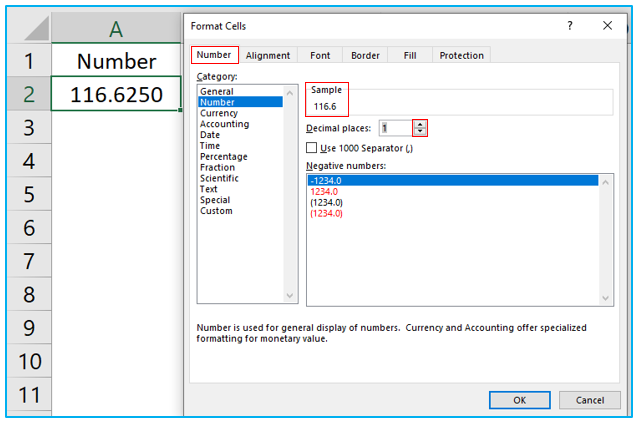
5. How to Round Decimals in Excel to a Certain Number of Places?
To round decimals of a number to a certain number of places just use the digit of how many decimals you want, inside the formula. You can use any of the ROUND formulas based on the situation and condition.
Step 1: Here I have rounded the number to 2 decimal places using the formula from the picture.
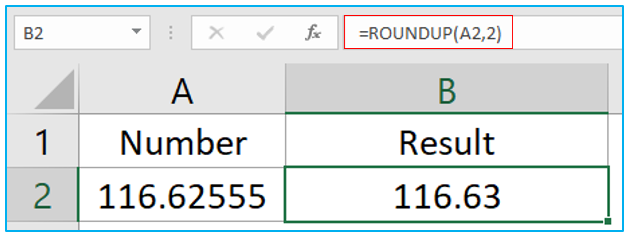
Step 2: The number in this picture have been rounded to 4 decimal places.
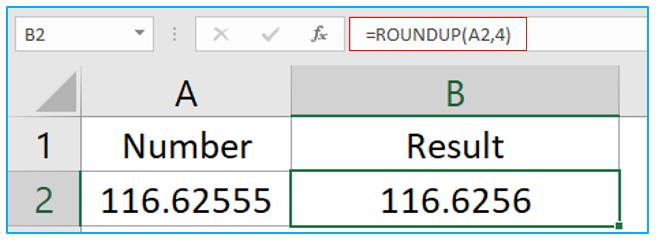
6. How to Extract a Decimal Part of a Number?
Step 1: To extract the decimal part of a number you can use TRUNC formula. This formula returns both the positive and negative decimal value.
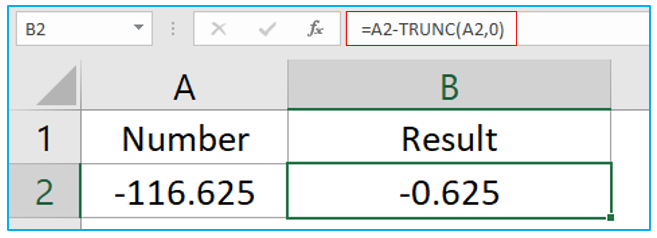
Step 2: If you want the decimal part to be returned as positive value always, just wrap the formula in the ABS function.
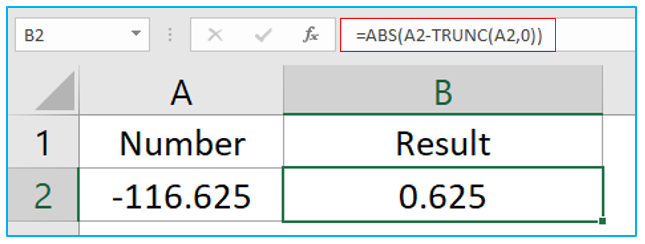
Application of ROUND Function in Excel
- Financial Reporting: Use the ROUND Function in Excel to round monetary values to the nearest cent, ensuring accurate financial reports and avoiding discrepancies due to fractional cents.
- Statistical Analysis: Simplify data analysis by rounding results to a manageable number of decimal places, making it easier to interpret and present statistical data.
- Budgeting: Create clear and precise budgets by rounding figures to whole numbers or two decimal places, facilitating straightforward financial planning and management.
- Invoice Creation: Ensure that invoice totals are rounded to the nearest cent, providing clean and professional documents for billing and payment processing.
- Engineering Calculations: Enhance the readability of engineering calculations by rounding complex results to a specified number of decimal places, aiding in better comprehension and communication of technical data.
- Inventory Management: Maintain accurate inventory records by rounding unit prices and quantities, helping to streamline inventory tracking and reporting processes.
For ready-to-use Dashboard Templates:
